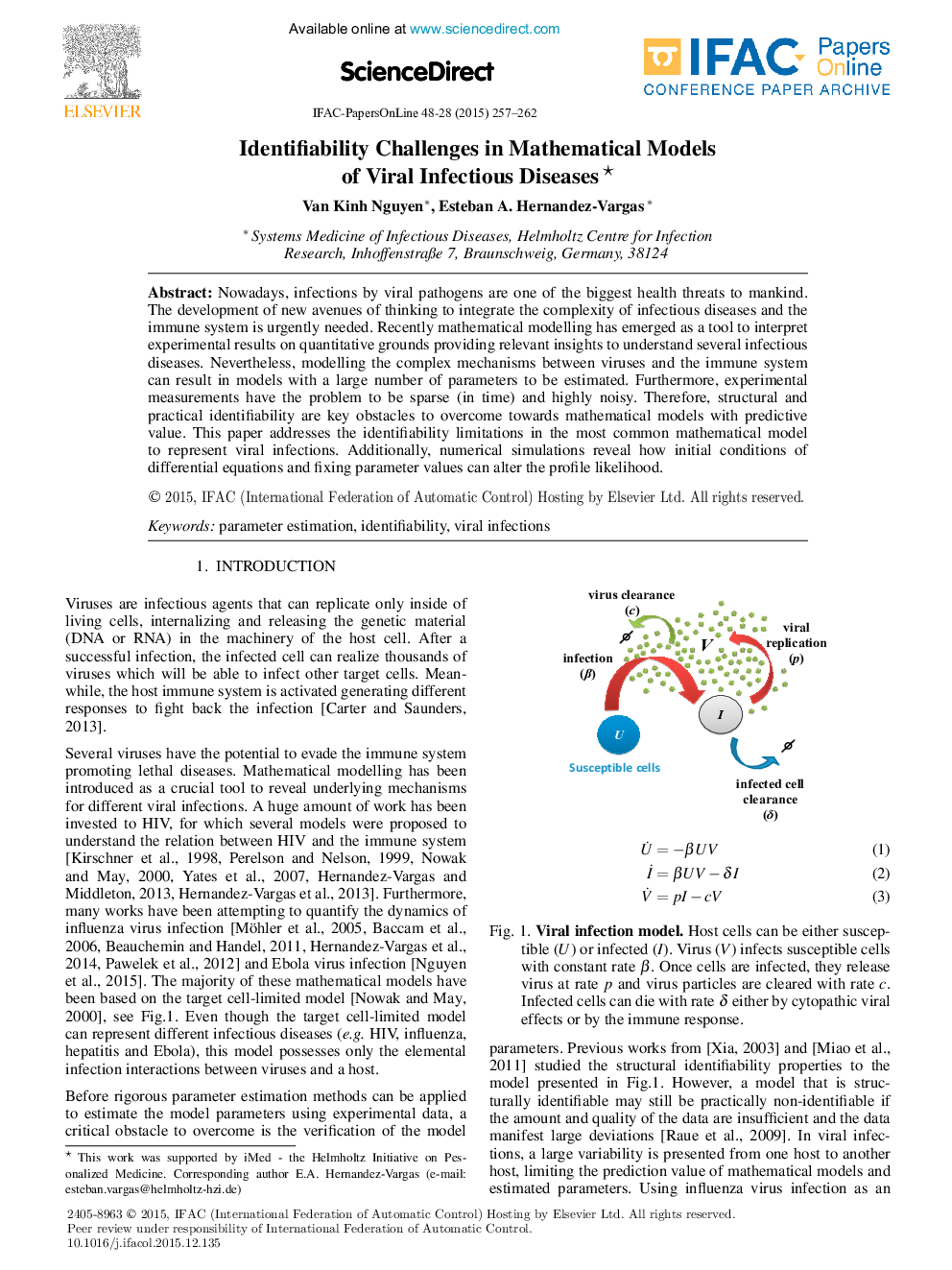| Article ID | Journal | Published Year | Pages | File Type |
|---|---|---|---|---|
| 711184 | IFAC-PapersOnLine | 2015 | 6 Pages |
Nowadays, infections by viral pathogens are one of the biggest health threats to mankind. The development of new avenues of thinking to integrate the complexity of infectious diseases and the immune system is urgently needed. Recently mathematical modelling has emerged as a tool to interpret experimental results on quantitative grounds providing relevant insights to understand several infectious diseases. Nevertheless, modelling the complex mechanisms between viruses and the immune system can result in models with a large number of parameters to be estimated. Furthermore, experimental measurements have the problem to be sparse (in time) and highly noisy. Therefore, structural and practical identifiability are key obstacles to overcome towards mathematical models with predictive value. This paper addresses the identifiability limitations in the most common mathematical model to represent viral infections. Additionally, numerical simulations reveal how initial conditions of differential equations and fixing parameter values can alter the profile likelihood.
